Knits on hems and sleeves:How to choose your suitable knits.
There are various kinds of knit, but the differences between them are hard to distinguish in text or pictures.
This time, let’s see the differences between each of the popular knits on ApparelX.
Cotton Spun Tereko
98% cotton, 2% polyurethane knit.
The cotton texture is soft and pleasant to the touch.
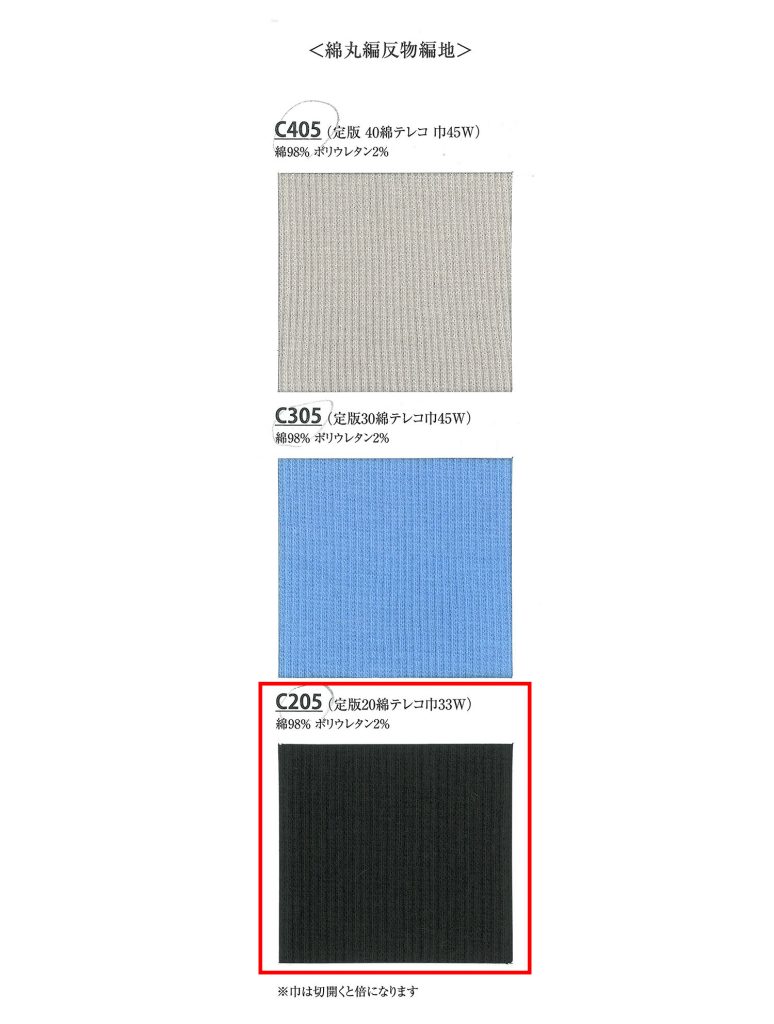
C405 is a 40’s count cotton yarn.
Also, C305 is knitted with 30’s count cotton yarn and C205 is with 20 count cotton yarn.
Yarn count
The yarn count is a constant-weight unit that expresses how much length is required for a given weight.
In the case of cotton, one pound of cotton yarn weighing 840 yards is defined as one yarn count, and the higher the number, the finer the yarn.
It is hard to tell from the photo, but C405 is the knit with the thinnest cotton yarn, and C205 is the knit with the thickest cotton yarn.
C205 is the thickest and C405 is the thinnest.
C405, which is knitted with the thinnest yarn, has the finest weave, making it softer to the touch.
Wool and wool blend
S220 is made of wool yarn.
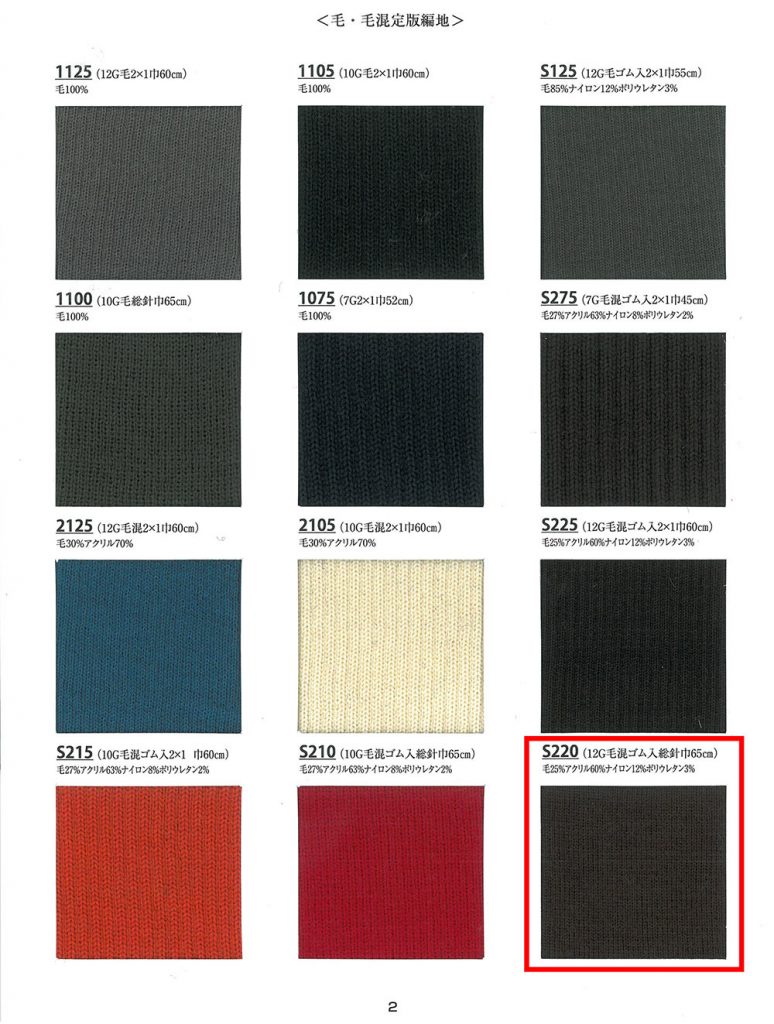
There are many types, and it is difficult to tell the difference between them, but they are classified according to the density of the knit, composition, and type of knitting.
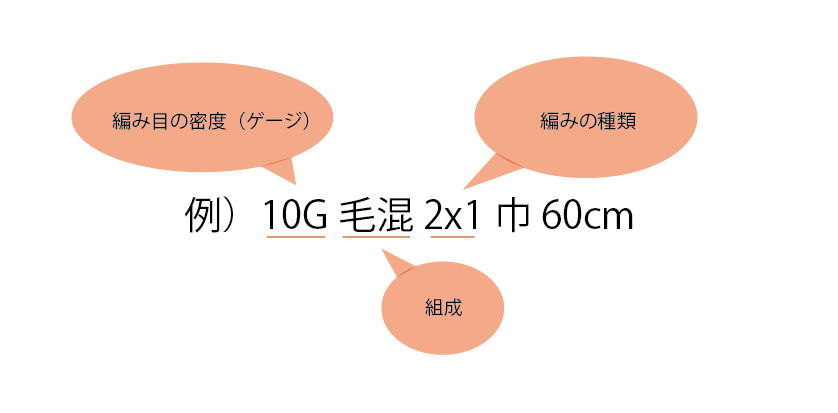
Density of knitting
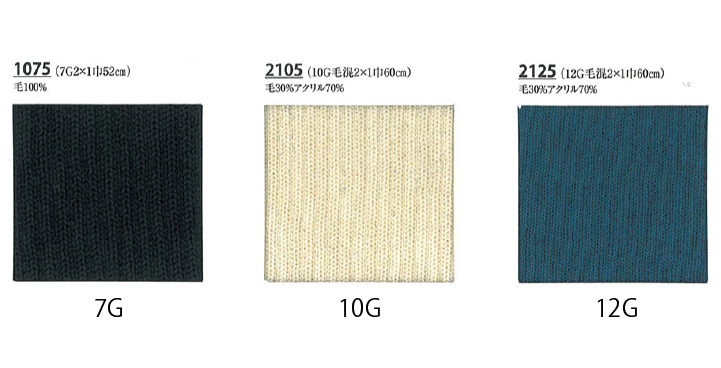
Let’s look at the knit density.
The density of knitting is expressed in gauge (G), with 12 needles per inch being 12G.
The larger the gauge, the finer the knitting.
The knitting pattern ranges from 7G to 12G, with 7G, 10G, and 12G being the finer gauge.
In terms of texture and appearance, 7G has the thickest ridges and thicker fabric, giving it a warm impression, while 12G has thin and soft texture with thin ridges.
In terms of the elasticity of the s, the 7G knit is stretchy and the 12G knit is loose and soft.
Composition
There are two types of composition, one with rubber and the other without. The one with rubber feels more rubbery and has more elasticity.
The non-rubberized version has a softer stretch.
Types of Weave
Finally, let’s look at the type of weave.
Two methods are used in this series: 2×1 and all-needle.

As you can see from the photo, the 2×1 and all-needle widths are very different in appearance.
The full-needle width is denser and firmer, while the 2×1 width is more ridged than the full-needle width.
Full-needle width has a flat texture due to its dense knitting and is thinner and more elastic than 2×1 width.
Polyester
P1500 is knitted with polyester and rubber.
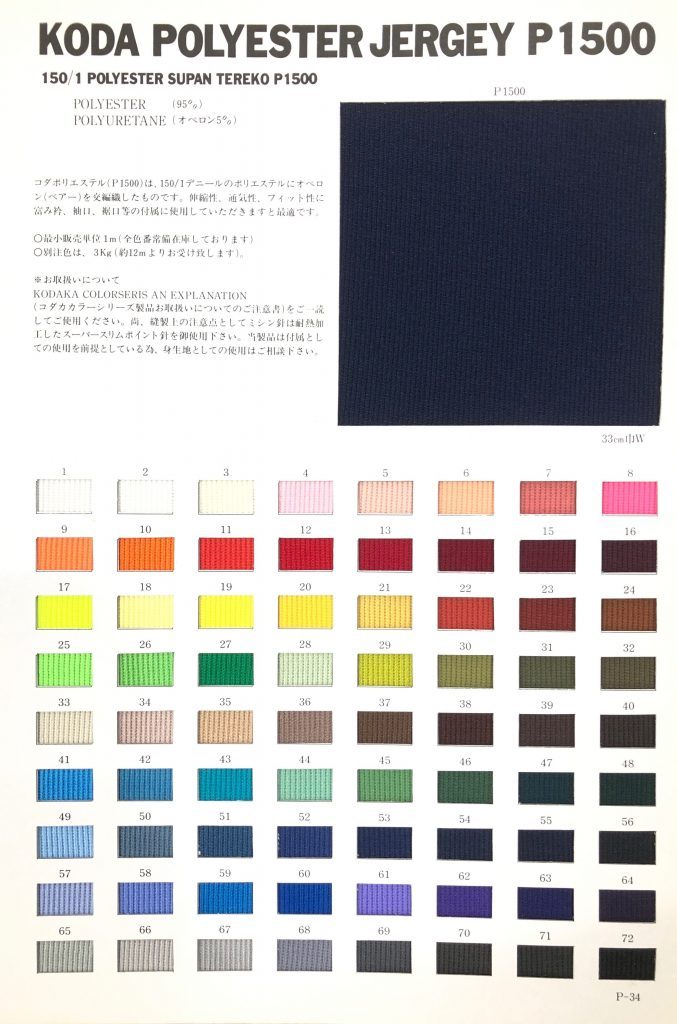
Denier
Denier is a constant-length count unit that expresses the thickness of yarn by weight for a certain length.
The standard is 9000m, 1g is 1 denier, 2g is 2 deniers, and so on.
The larger the denier, the thicker the yarn.
The polyester yarn used for this is 150/1 denier, which means it is very thin.
It is a thin fabric and has high elasticity due to the operon in it.
Conclusion
There are various types of knitting and yarn thickness, and we hope you can find what you are looking for according to your design and purpose.
For more rib knit, please take a look at ApparelX Rib Knit product page



